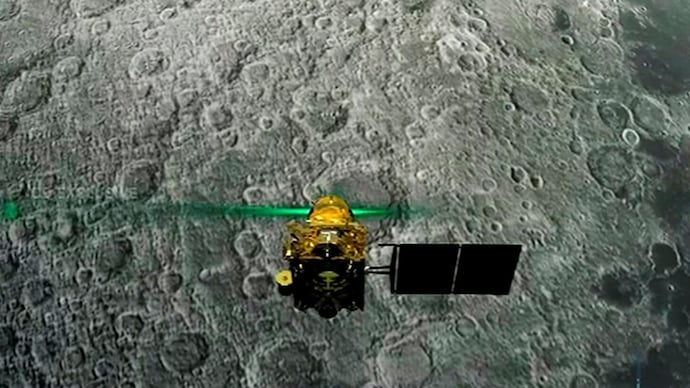12 years of Chandrayaan 1: From discovering water molecules on Moon to boosting India's space prowess
It has been 12 years since Chandrayaan 1 was launched to study of the chemical, mineralogical and photogeologic mapping of the moon. Before its crash, it sent back readings from its three instruments, one of which showed existence of water molecules in lunar atmosphere.

Chandrayaan 1, India's first mission to the Moon, was launched on this day, 12 years ago, by the Indian Space Research Organisation (Isro) from Satish Dhawan Space Centre, at Sriharikota, Andhra Pradesh.
Chandrayaan 1 reached the lunar orbit 21 days after its launch and after making 3400 orbits around the Moon and transmitting data, controllers lost communication with the spacecraft on Aug 28, 2009. While the satellite continues to move around the moon, due to sensor failure, it was rendered inoperable close to one year after its launch.
Chandrayaan 1 was originally designed to orbit the moon for a two-year period. Apart from the study of the chemical, mineralogical and photogeologic mapping of the moon, the primary objective of Chandrayaan 1 was to upgrade and test India's technological capabilities in space and return scientific information on the lunar surface.
The spacecraft carried 11 scientific instruments built in India, USA, UK, Germany, Sweden and Bulgaria. According to Isro, the mission carried five scientific payloads from India and six from abroad.
Those from India included:
a) Terrain Mapping Camera (TMC)
b) Hyper Spectral Imager (HySI)
c) Lunar Laser Ranging Instrument (LLRI)
d) High Energy X-ray Spectrometer (HEX)
e) Moon Impact Probe(MIP)
Scientific payloads from abroad:
f) Chandrayaan-I X-ray Spectrometer (CIXS)
g) Near Infrared Spectrometer (SIR - 2)
h) Sub keV Atom Reflecting Analyzer (SARA)
i) Miniature Synthetic Aperature Radar (Mini SAR)
j) Moon Mineralogy Mapper (M3)
k) Radiation Dose Monitor (RADOM)
Chandrayaan 1 also carried a 35 kg Moon Impact Probe (MIP), which carried a video camera, a radar altimeter, and a mass spectrometer. The side panels of the box-like probe were painted with the Indian flag.
FROM CHANDRAYAAN 1 LAUNCH TO FREEFALL
After its launch on October 22, Chandrayaan 1 was put into a 7502 x 504 km lunar polar orbit and then lowered into a 100 km circular polar orbit on November 8. On November 14, the MIP was released, which hit the lunar surface 27 minutes after its release from the spacecraft.
The MIP was released into a small deorbit and then, according to Nasa, it went into freefall, sending "back readings from its three instruments" every 4 seconds until it deliberately crashed onto the lunar surface. All three instruments returned data before the crash.
Data from Chandra's Altitudinal Composition Explorer (CHACE) on the Moon Impact Probe showed the existence of water molecules in the lunar atmosphere.
WHERE IS CHANDRAYAAN-1 NOW?
In late November 2008, Chandrayaan 1 began experiencing abnormally high temperatures, probably due to the overheating according to Isro, and for a time, it could only run one scientific instrument at a time.
In May 2009, according to Nasa, the spacecraft was delivered to a higher 120-mile (200-kilometer) orbit, to keep the temperatures aboard the satellite at tolerable levels.
In August 2009, Chandrayaan 1 suffered a star sensor failure. Soon after, a backup sensor also failed.
The last contact with Chandrayaan 1 was on August 28, 2009. It still circles around the Moon.
